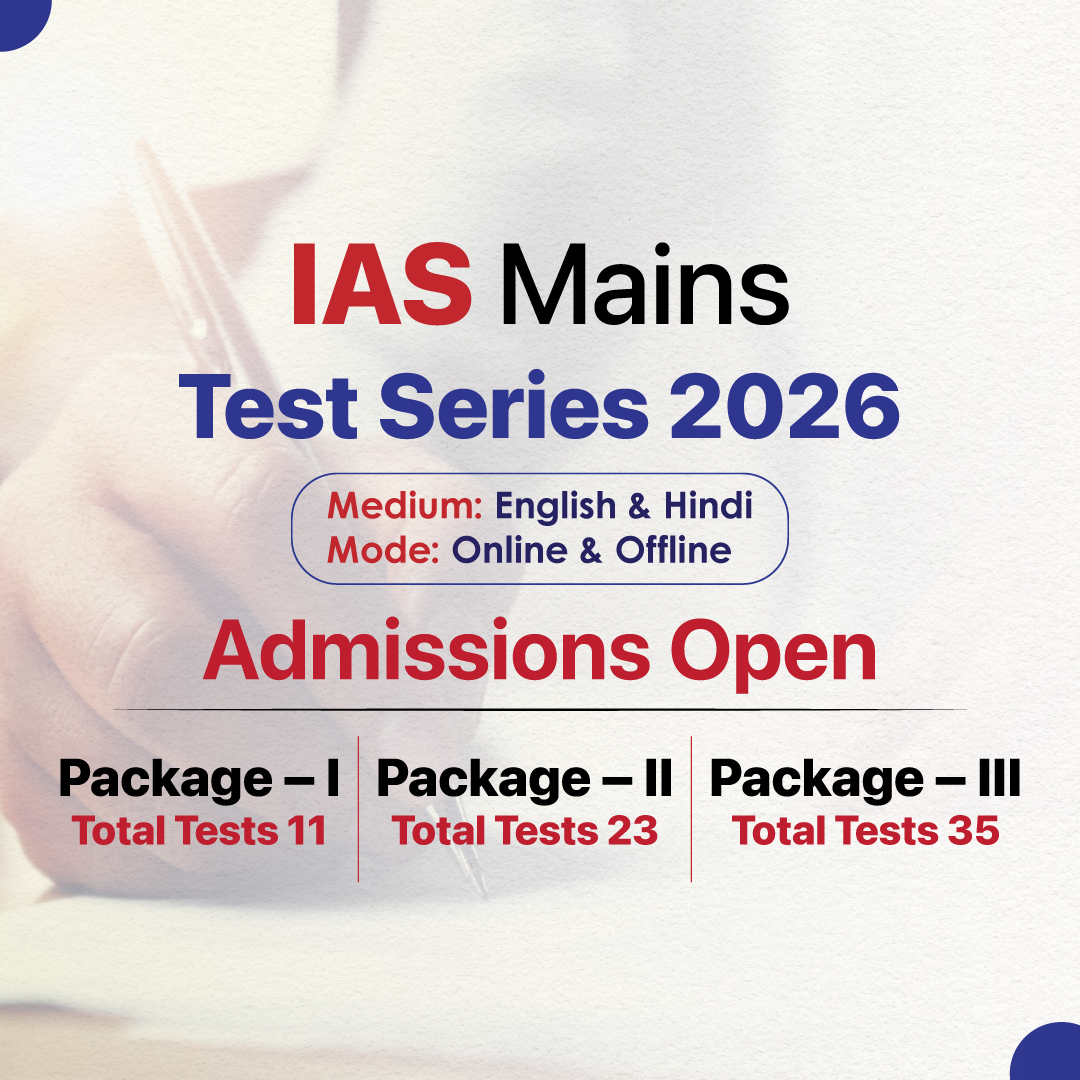Uttarakhand Switch to Hindi
Uttarakhand Police Recover MDMA Drugs
Why in News?
Uttarakhand Police arrested a woman near the India-Nepal border with 5.688 kg of metyhlenedioxy-methylamphetamine (MDMA) worth Rs 10.23 crore and booked her under the Narcotic Drugs and Psychotropic Substances Act, 1985.
Note: India’s National Policy on Narcotic Drugs and Psychotropic Substances is guided by Article 47 of the Constitution, which urges the State to prohibit the consumption of intoxicating substances harmful to health, except for medicinal use.
- The Central Government holds the primary responsibility for controlling drug abuse and enforcing narcotics laws in the country.
Key Points
- About MDMA:
- MDMA (3,4-methylenedioxymethamphetamine) is a synthetic derivative of amphetamine, widely known as a recreational drug.
- Since the 1980s, it has been popular on the streets under names like Ecstasy, E, Molly, XTC, X, Beans, and Adams.
- MDMA belongs to a class of psychoactive substances known as entactogens (from Greek, meaning “touching within”).
- As an entactogen, it induces euphoria, enhances emotional closeness, boosts empathy and communication, and may aid in retrieving repressed memories.
- It can severely affect the cardiovascular, neurological, renal, and hepatic systems. Its potentially life-threatening effects require urgent recognition and intervention in clinical and emergency settings.
- Narcotic Drugs and Psychotropic Substances Act, 1985:
- The Act regulates certain operations such as manufacture, transport, and consumption related to narcotic drugs and psychotropic substances.
- Under the Act, financing certain illicit activities such as cultivating cannabis, manufacturing narcotic drugs, or harbouring persons engaged in them is an offence.
- Persons found guilty of this offence will be punished with rigorous imprisonment of at least 10 years, extendable up to 20 years, and a fine of at least Rs 1 lakh.
- It also provides for forfeiture of property derived from, or used in, illicit traffic in narcotic drugs and psychotropic substances.
- It also provides for the death penalty in some cases where a person is a repeat offender.
- The Narcotics Control Bureau was also constituted in 1986 under the Act.
- Initiatives Taken to Tackle Drug Abuse in India:
- Project Sunrise: It was launched by the Ministry of Health and Family Welfare in 2016 to tackle the rising HIV prevalence in north-eastern states in India, especially among people injecting drugs.
- Nasha Mukt Bharat: The government has also announced the launch of the ‘Nasha Mukt Bharat’, or Drug-Free India Campaign, which focuses on community outreach programs.
- NIDAAN and NCORD Portals: NIDAAN and NCORD Portals are online platforms that maintain detailed databases of drug offenders, supporting law enforcement agencies in tracking drug-related crimes and trends.
- Seizure Information Management System: The Narcotics Control Bureau has been provided funds for developing new software like the Seizure Information Management System (SIMS), which will create a complete online database of drug offenses and offenders.
- National Drug Abuse Survey: The government is also conducting a National Drug Abuse Survey to measure trends of drug abuse in India through the Ministry of Social Justice & Empowerment with the help of the National Drug Dependence Treatment Centre of AIIMS.
Narcotics Control Bureau (NCB)
- The Government of India established the NCB in 1986 under the Narcotic Drugs and Psychotropic Substances (NDPS) Act, 1985.
- NCB functions as the apex coordinating agency for drug law enforcement in India and operates under the Ministry of Home Affairs.
Bihar Switch to Hindi
Bihar Idea Festival
Why in News?
The Bihar government launched the 'Bihar Idea Festival' portal to promote grassroots innovation and entrepreneurship.
- The initiative invites students, youth, entrepreneurs, and startup teams—even from rural areas—to submit their ideas directly to the government.
Key Points
- About the Bihar Idea Festival:
- The initiative aims to collect innovative ideas and practical solutions from across Bihar and offer a strong platform to support and scale them.
- The portal is mobile-friendly, making it easily accessible for people from remote and rural areas.
- The government plans to gather at least 10,000 ideas from all 38 districts of Bihar to ensure inclusive participation.
- A team of experts will assess the submitted ideas. At least 100 ideas will be shortlisted initially based on innovation and feasibility.
- Shortlisted participants will be eligible for technical and financial support, including seed funding of up to Rs 10 lakh under the Startup Bihar Policy.
- Winners of the Idea Festival will get a wild card entry to the seed funding pitch round.
- The initiative also aims to empower women entrepreneurs, enabling many to emerge as ‘Startup Didis’, inspired by the JEEViKA initiative.
- The initiative aims to collect innovative ideas and practical solutions from across Bihar and offer a strong platform to support and scale them.
- JEEViKA:
- JEEViKA is the Bihar Rural Livelihoods Project aimed at the social and economic empowerment of the rural poor in Bihar. It was launched in 2006.
- Managed by the Bihar Rural Livelihoods Promotion Society (BRLPS), an autonomous body under the Department of Rural Development, Government of Bihar.
- Initially supported by the World Bank and later expanded to include the Livelihoods Restoration component of the Bihar Kosi Flood Recovery Project (BKFRP).
- The National Rural Livelihoods Mission (NRLM) has designated BRLPS as the State Rural Livelihoods Mission (SRLM) for Bihar to implement NRLM's strategies for poverty alleviation.
Bihar Start-up Policy
- The state government launched the Bihar Start-up Policy in 2016 to build a transparent and independent start-up ecosystem through funding, promotion, and policy support.
- It was later amended as the Bihar Start-up Policy 2017.
- The state established a dedicated Start-up Trust with an initial corpus of Rs 500 crore, which serves as the nodal agency for the implementation of the policy.
- Bihar Start-up Policy 2022:
- To make the ecosystem more inclusive and youth-centric, the government approved the Bihar Start-up Policy 2022.
- It aims to expand its reach, ensure faster execution, and position Bihar as a preferred start-up destination by tapping into the potential of local talent.
- Key Objectives:
- Foster inclusive growth by building a conducive environment for start-ups.
- Leverage local youth potential to drive innovation and entrepreneurship across the state.
- The government plans to:
- Develop new incubators and expand existing ones.
- Set up common infrastructure and co-working spaces to support start-ups across the state.
- To nurture an entrepreneurial mindset, the policy promotes:
- Entrepreneurship Development Centres (EDCs) and Entrepreneurship Facilitation Centres (EFCs).
- Integration of entrepreneurship education in schools, universities, MOOCs, and through internships.
Uttar Pradesh Switch to Hindi
UP to Develop Historical Buildings into Heritage Hotels
Why in News?
The Uttar Pradesh Tourism Department will renovate 11 historical buildings, including ancient forts, and transform them into heritage hotels, cultural centres, or museums through the Public-Private Partnership (PPP) model to boost tourism in the state.
Key Points
- About the Project:
- The project aims to preserve Uttar Pradesh’s architectural and cultural heritage while creating employment opportunities for thousands across the state.
- Under this initiative, private players will design, develop, and restore the identified heritage sites and hand them over to the government for further use.
- This heritage revival programme forms part of a larger state strategy to blend cultural conservation with modern development goals, ensuring both heritage protection and local growth.
- The initiative seeks to revive the Bundelkhand region’s economy through heritage-based tourism, encouraging sustainable development anchored in cultural identity.
- Key Sites Identified for Renovation:
|
Site |
Location |
|
Talbehat Fort |
Lalitpur |
|
Rangarh and Bhuragarh Fort |
Banda |
|
Wazirganj Baradari |
Gonda |
|
Alambagh Bhawan, Gulistan-e-Eram, and Darshan Vilas |
Lucknow |
|
Tikait Rai Baradari |
Kanpur |
|
Mastani Mahal and Senapati Mahal |
Mahoba |
|
Tahrauli Fort |
Jhansi |
|
Sitaram Mahal/Kotwan Fort |
Mathura |
UP Tourism Policy 2022
- About: The primary objectives of tourism policy are to ensure sustainable development, enhance visitor satisfaction, boost economic growth, protect cultural and natural resources, and foster community inclusivity and participation
- Attractive Financial Incentives: The policy offers generous subsidies and financial support, including:
- Capital investment subsidies ranging from 10–25% (capped at Rs 2–40 crore based on investment size).
- 5% interest subsidy on bank loans up to Rs 5 crore for 5 years.
- 100% exemption on stamp duty, land conversion fees, and employment-linked EPF reimbursements.
- Additional incentives target Tier 2+ locations, women entrepreneurs, SC/ST/backward classes, and focus tourism destinations.
- Focus on Eco, Heritage & Niche Tourism: The policy promotes developing:
- Eco-tourism circuits like wildlife sanctuaries, camping sites, trekking, and nature walks
- Heritage, MICE (Meetings, Incentives, Conferences, Events), wellness, and amusement parks through PPP models.
- Integration with themed circuits—Ramayana, Krishna, Buddhist, Mahabharata, and Shakti Peeth.
- Uttar Pradesh recorded 65 crore tourists in 2024, driven by the development of major religious and heritage sites like Ayodhya, Kashi, and Mathura, as well as various ancient temples and pilgrimage centres.
- Investment Facilitation & Global Promotion: UP aims to attract Rs 5,000 crore annually by:
- Establishing a Tourism Investor Facilitation Cell for market research, approvals, and investment support
- Participation in roadshows, international tourism events, and collaborative branding—placing UP on the global tourism map.
Madhya Pradesh Switch to Hindi
MP Wins Silver Medal for ‘One District–One Product’ Scheme
Why in News?
The Central government awarded Madhya Pradesh the Silver Medal in the 2024 ODOP Awards under the States and Union Territories category for its unique products and effective implementation of the ‘One District–One Product’ (ODOP) initiative.
- This achievement reflects the state’s commitment to realising the vision of ‘Local Hands to Global Platforms’, aligning with the goals of ‘Atmanirbhar Bharat’.
Key Points
About MP’s ODOP Products
- Wide Product Coverage: The ODOP scheme in Madhya Pradesh includes products selected for their geographical, biological, natural, or production-specific uniqueness.
- The scheme is being implemented in all districts, supporting a variety of products such as green vegetables, millets, handicrafts, handlooms, and local tools, with special focus on encouraging local artisans.
- Madhya Pradesh is expanding its ODOP products globally. The state has developed a grassroots exporter base, and several local products are now reaching international markets. Key examples include:
- Bananas from Burhanpur
- Basmati rice from Raisen
- Chinor rice from Balaghat
- The ODOP initiative has evolved into a people-driven movement involving Artisans, SHGs, FPOs, startups, and local entrepreneurs.
- Geographical Indication (GI) tag Recognition: Nineteen products from MP have received GI tags, with seven of them included in the ODOP scheme. Major Products include:
- Chanderi Saree, Bagh Print, Maheshwari Saree
- Kadaknath Chicken, Ratlami Sev, Morena Gajak
- Gond Painting, Wrought Iron Craft, Bell Metal Ware, and more.
About One District One Product Scheme
- The ODOP initiative aims to promote balanced regional development by identifying and nurturing unique products from each district across India.
- The initiative seeks to select, brand, and promote at least one distinctive product from every district to drive inclusive socio-economic growth and create opportunities for local communities.
- So far, the ODOP initiative has identified 1,102 products from 761 districts, highlighting the rich diversity of crafts, produce, and industries across the country.
- The state government provides financial assistance, group marketing facilities, and other resources to the entrepreneurs to get these products recognized in the national and international markets.
Geographical Indication (GI) Tag
- A Geographical Indication (GI) tag is a name or mark used on special products that belong to a specific geographical location or origin.
- The GI tag ensures that only authorised users or people residing in the geographical region are allowed to use the name of a popular product.
- It also protects the product from being copied or imitated by others.
- A registered GI tag is valid for 10 years.
- GI registration is overseen by the Department for Promotion of Industry and Internal Trade under the Ministry of Commerce and Industry.
- Legal Framework:
- It is regulated and guided by the WTO Agreement on Trade-Related Aspects of Intellectual Property Rights (TRIPS).
Haryana Switch to Hindi
21st Death Anniversary of Swami Kalyandev Maharaj
Why in News?
Haryana Chief Minister paid tribute to Swami Kalyandev Maharaj Ji on his 21st death anniversary at his Samadhi located in Shukdev Ashram, Muzaffarnagar in Uttar Pradesh.
Key Points
- Tribute to Swami Kalyandev Maharaj:
- CM unveiled a statue of Swami Kalyandev Ji Maharaj, calling it a source of eternal inspiration for future generations.
- The CM also released an Odia book on Shukdev Tirtha.
- He also announced a grant of Rs 11 lakh for the construction of Haryana Bhawan at Shukdev Tirtha.
- He highlighted the saint’s life of renunciation, service, and reform, rooted in humility and spiritual pursuit.
- He noted that thousands of years ago, Maharishi Shukdev guided King Parikshit toward salvation through the Bhagwat Katha at this very site.
- About Swami Kalyandev Ji:
- Swami Kalyandev Ji Maharaj, born into a humble family, lived for 129 years and devoted his life to knowledge, education, and social service, which he considered his true religion.
- This revered saint attained samadhi in the year 2004.
- He established several schools, colleges, and Gurukuls.
- He opposed untouchability, caste discrimination, and other social evils and promoted equality, love, and brotherhood.
- The Government of India honoured him with the Padma Shri (1982) and Padma Bhushan (2000).
- Swami Kalyan Dev Seva Trust: The Swami Kalyan Dev Seva Trust established within the Shukdev Ashram, carries forward the legacy of service and compassion through various welfare initiatives.
- The trust extends support to the poor, the sick, and the underprivileged. It is actively engaged in the fields of education, healthcare, and social upliftment.
- Swami Kalyandev Ji Maharaj, born into a humble family, lived for 129 years and devoted his life to knowledge, education, and social service, which he considered his true religion.


.png)




.jpg)























.png)


.jpg)

 PCS Parikshan
PCS Parikshan

